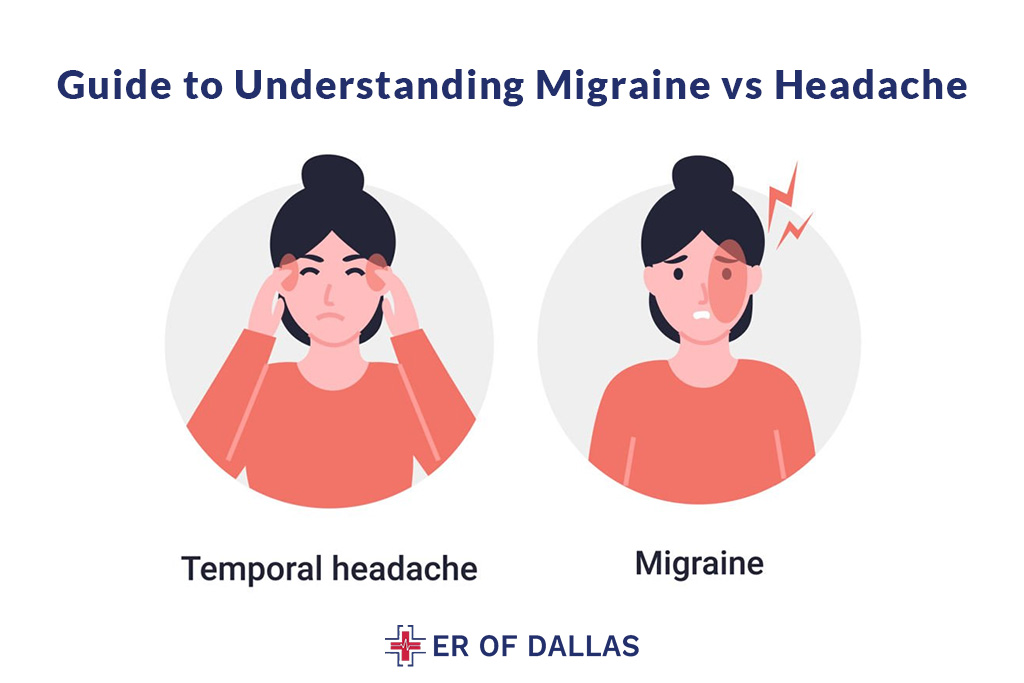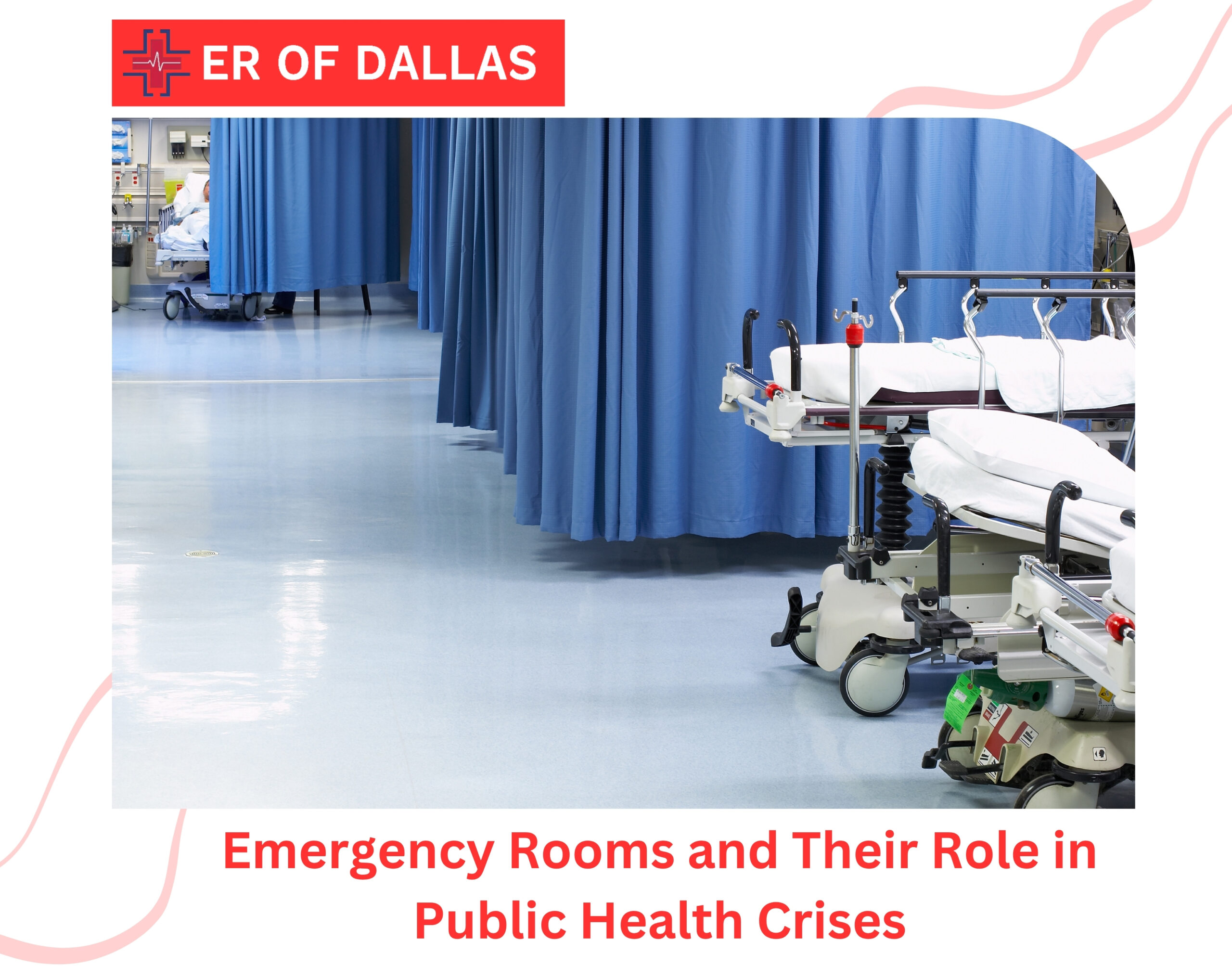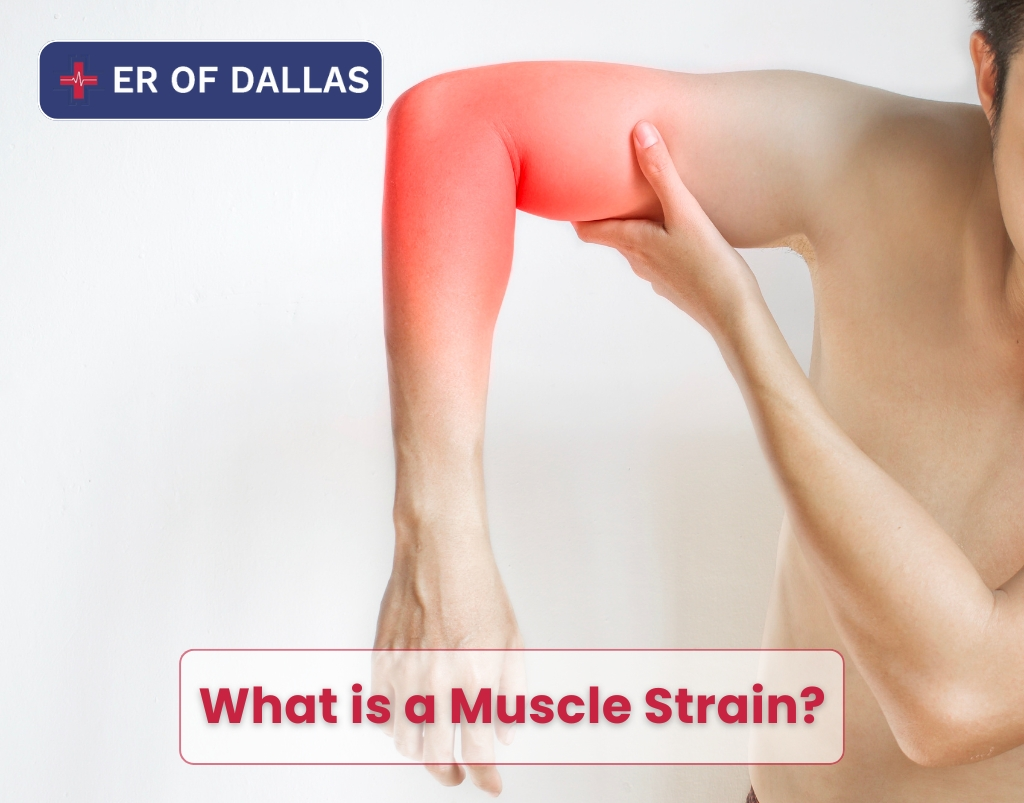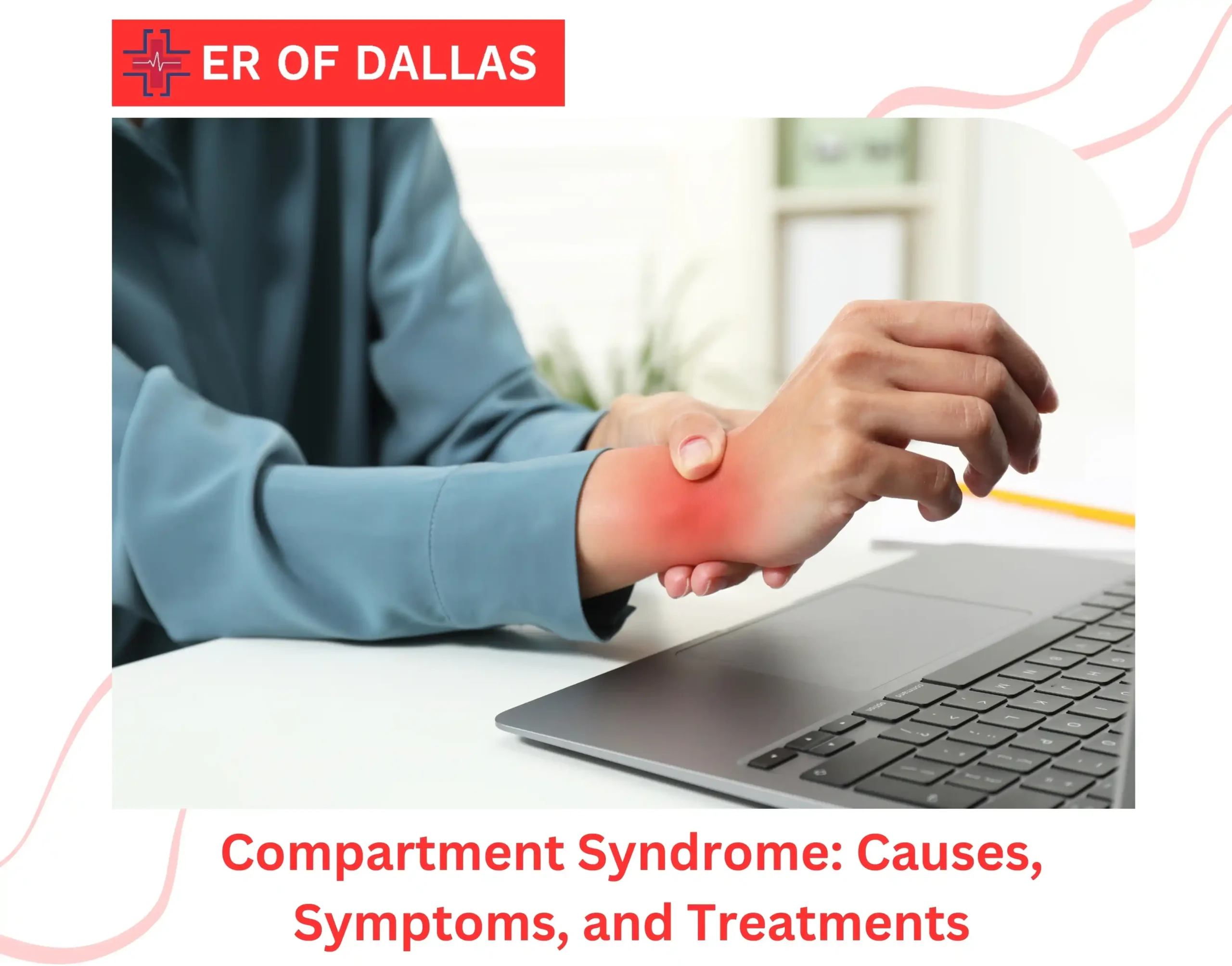In the US, migraines affect more than 37 million men, women, and children, claims nurse practitioner Brandeis Brockman, CRNP, BSN, MSN. Even Nevertheless, fewer than 5% of individuals impacted have obtained the right medical attention and a precise diagnosis.
Be aware of the distinctions between headaches and migraines before dismissing your pain as just another headache. Knowing their key differences may meet your long-term requirements.
You can’t always think clearly when you have a headache or migraine-like head pain. However, paying attention to the indications and symptoms could make the difference between treating a migraine or a common headache. About 40% of adults worldwide suffer from tension headaches, while 10% suffer from migraines. It’s critical to understand the differences between the two, their causes, how to treat and prevent them, and when to seek medical attention.
Migraine vs Headache
Most people occasionally have headaches. But what distinguishes a migraine from a headache? There are several notable distinctions between migraines and headaches, which may surprise you.
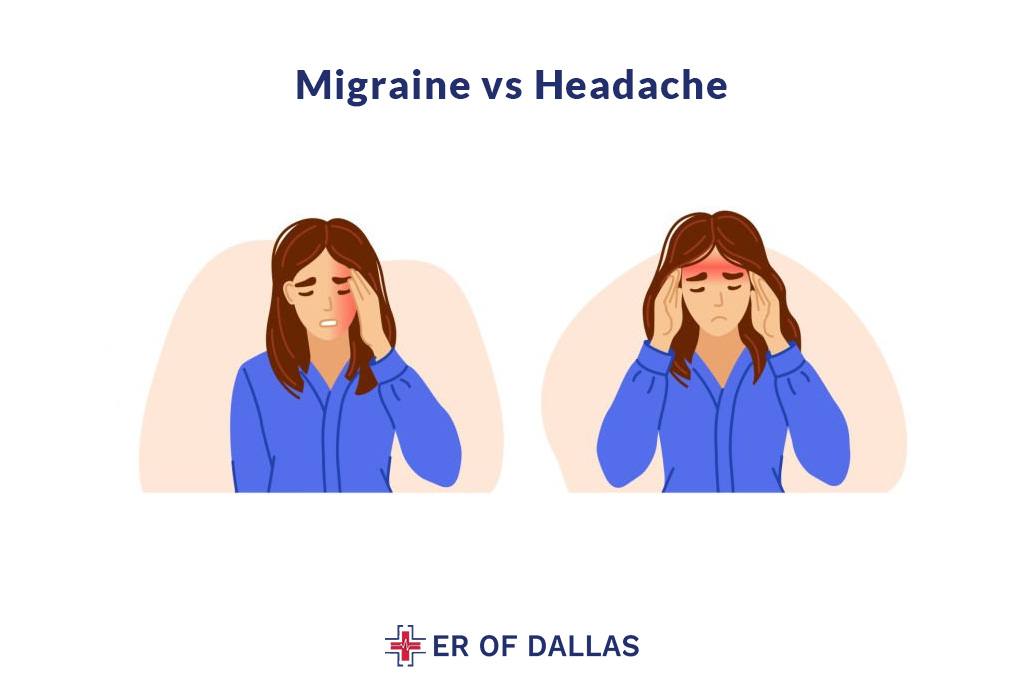
One kind of headache is a migraine. However, not every headache is a migraine. Tension headaches are the most prevalent type of headache, with migraines coming in second. Numerous symptoms are brought on by migraines that are typically absent from other types of headaches. Furthermore, symptoms from migraines may appear both before and after the headache.
Knowing the difference between a headache and a migraine will help you determine the best course of action to manage your discomfort and reduce the likelihood that it will return.
How Should a Headache Be Defined
A headache is a type of discomfort in the head or face that is frequently characterized as a dull, acute, throbbing pressure. The kind, intensity, location, and frequency of a headache might vary substantially.
Most people will suffer from headaches frequently throughout their lives. They are the most prevalent type of discomfort and are frequently given as an excuse for missing work or school days and doctor visits. Although the majority of headaches are not harmful, some kinds may indicate a more serious illness.
Types of Headache
Over 150 different kinds of headaches exist. Primary and secondary headaches are the two basic groups into which they occur.
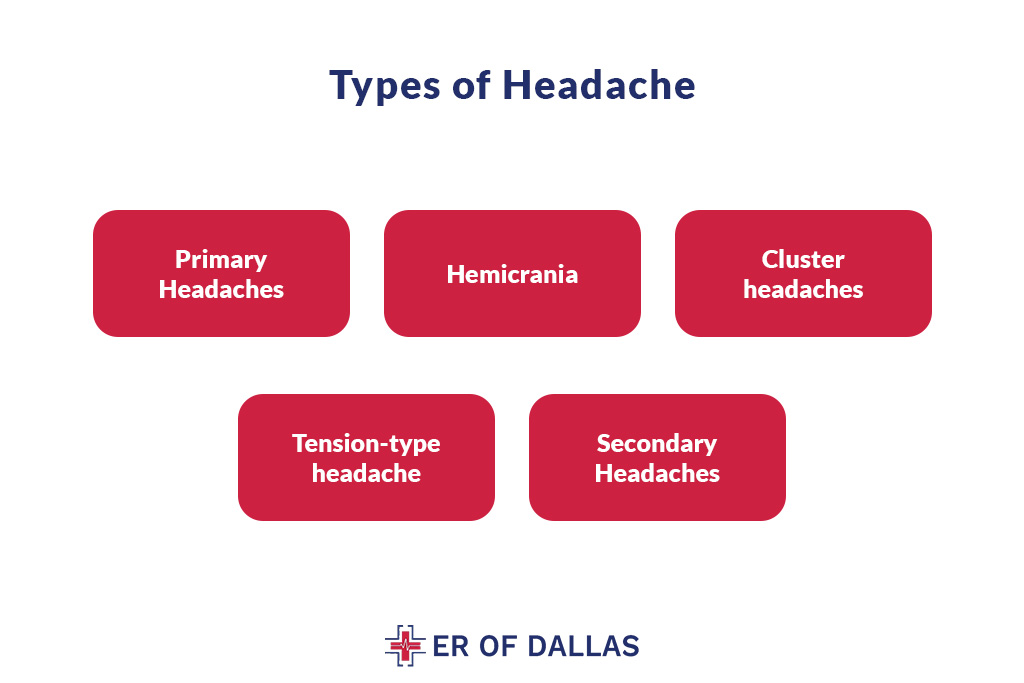
Primary Headaches
Primary headaches are caused by malfunctioning or overactive pain-sensitive features in the head. They are not brought on by or a sign of any underlying medical issues. Certain individuals may be genetically predisposed to primary headaches.
Hemicrania
Persistent headaches with variable intensity are known as hemicrania. Usually, the same side of the head is affected by these headaches. Hemicrania headaches can be episodic or persistent.
Some individuals may go through phases of recurrent headaches interspersed with intervals without headaches.
Additional indications of hemicrania headaches consist of:
- Vomiting and nausea
- Watery eyes due to light and sound sensitivity
- Inflammation or redness in the eyes
- Perspiration congestion
- Enlarged eyelids
Cluster headaches
Severe pain on one side of the head, usually behind the eye, is a symptom of cluster headaches. These headaches arise in clusters, which means that for a few weeks, several headaches will happen every day at around the same time.
Cluster headaches come in cycles of recurrent headaches interspersed by headache-free intervals.
The National Institutes of Health (NIH) states that cluster headaches typically linger six to twelve weeks. Males are more likely than females to experience cluster headaches.
Cluster headache symptoms include:
- Intense discomfort behind one eye and on one side of the skull
- Teary, red eyes
- Perspiring
- Congestion
- Agitation or restlessness
- Variations in heart rate
Tension-type headache
Primary headache disorders of the tension kind impact around 42% of the adult global population.
Headaches of the tension variety have the sensation of a tight band surrounding the head.
Tension headaches are categorized by doctors as either episodic or chronic. Ten to fifteen days out of the month experience tension-type headaches that are episodic. The frequency of chronic tension-type headaches might lead to scalp pain.
Tension headaches can be brought on by several things. These may consist of:
- Tensing up the jaw
- Bad alignment
- Hunger
- Apnea during sleep
- Anxiety or depression
- Putting strain or bend on the neck
- Insufficient sleep
- Arthritis
Secondary Headaches
Secondary headaches are brought on by an underlying medical problem. They are seen as an indication or symptom of a disease.
Some secondary headache types that go away when the primary ailment is addressed and aren’t always harmful are:
- Headache from dehydration.
- Headaches from the sinuses.
- Headaches from excessive drug use.
Who Is Affected by Headaches?
Headaches can affect children, adolescents, and adults alike. 96% of individuals report having had a headache at some point in their lives.
Tension-type headaches affect roughly 40% of individuals worldwide, while migraine headaches affect about 10% of people.
Symptoms and Causes of Headache
The interaction of impulses between your brain, blood vessels, and surrounding nerves causes headache discomfort. A headache is caused by many mechanisms that trigger particular nerves that influence blood vessels and muscles. Your brain receives pain signals from these nerves, which results in headaches.
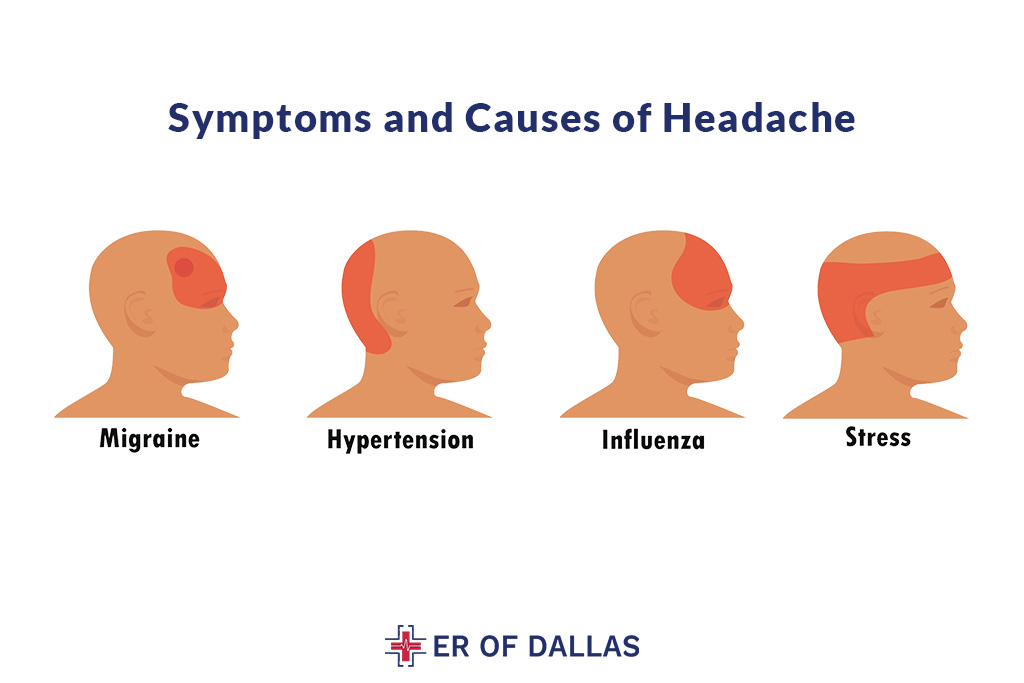
Is It Hereditary to Suffer From Headaches?
Migraines in particular tend to run in families. Most children who suffer from migraines also typically have at least one biological parent who does. Children are up to four times more likely to get migraines if their parents do.
In addition, common environmental elements within a family’s home can cause headaches. These factors include:
- Consuming particular foods or components, such as cheese, chocolate, fermented foods, coffee, and alcohol.
- Contact with allergens.
- Smoke in the vicinity.
- Strong perfume or home chemical scents.
When Should You Seek Medical Attention for Headache Symptoms?
Seek immediate medical attention if any of these headache symptoms apply to you or your child:
- A sudden, intense headache that is novel.
- Fever, rash, stiff neck, shortness of breath, and headache together.
- Headaches brought on by accidents or head injuries.
- Developing a new headache kind beyond the age of 55.
If your headache is accompanied by any neurological signs, such as the following, get medical attention very immediately.
- Weakness.
- Immobility.
- Seizures.
- Lightheadedness.
- A shift in personality or inappropriate conduct.
- Abrupt loss of equilibrium or tripping.
- Vision alterations, such as double vision, blind patches, or hazy vision.
- Any tingling or numbness.
- Bewilderment in the mind.
- Speech problems.
Diagnosis and Tests of Headache
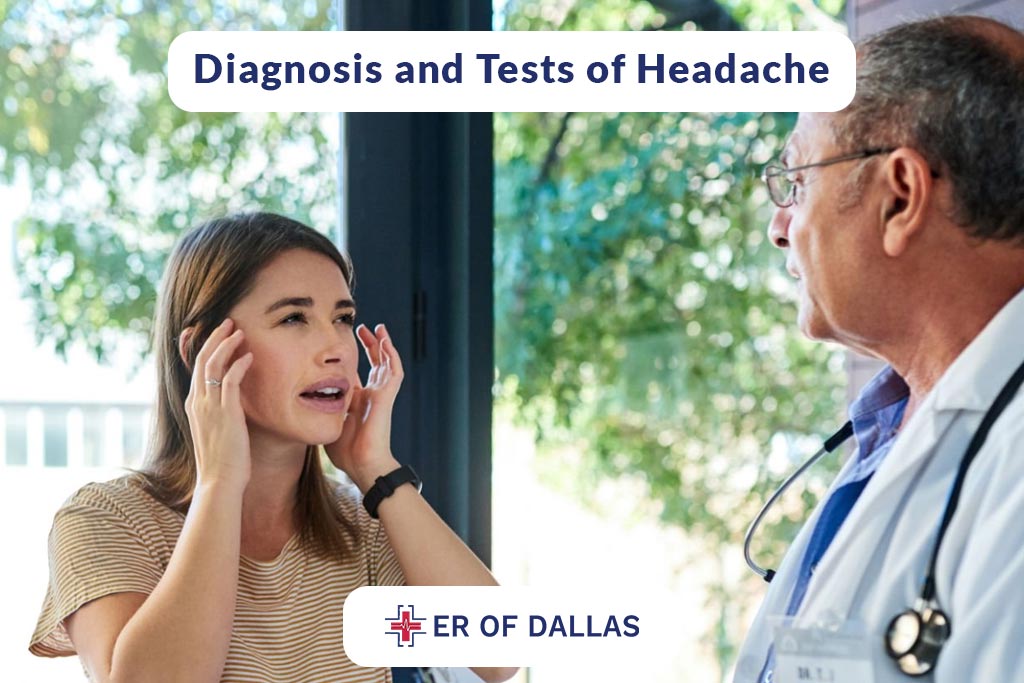
What Is the Evaluation and Diagnosis of Headaches?
Speak with your healthcare physician if you get severe or frequent headaches.
It’s critical to accurately diagnose headaches so your healthcare practitioner can recommend the right kind of treatment to make you feel better. In addition to performing a physical examination and talking with you about your headache symptoms, your physician will also go over your medical history. This discussion is a component of a headache assessment.
Your healthcare professional will inquire about your headache history during the evaluation, covering the following topics:
- The sensation of the headaches.
- The frequency of the headaches.
- How long does each headache last?
- How much agony do you feel from the headaches?
- What beverages, meals, or activities set off your headaches?
- The amount of caffeine you consume daily.
- How stressed out are you?
- the nature of your sleeping patterns.
Your headache can be diagnosed more precisely if you are aware of:
- the moment the headache appeared.
- Whether the headaches are of one kind or several different kinds.
- if engaging in physical exercise makes your headache worse.
- Who else suffers from headaches in your family?
- Which, if any, symptoms manifest in between headaches.
Neurological testing aims to rule out conditions that may also be headache-causing. If you get severe headaches, you may have a central nervous system disease.
Based on the findings of your neurological examination, physical examination, and headache history, your doctor should be able to identify the type of headache you have, determine whether more testing is necessary, and assess whether a major issue is present.
They could suggest that you see a headache expert if they are uncertain about the cause.
What is the Treatment for a Headache?
Over-the-counter pain medications typically work effectively for occasional tension headaches. However, be advised that overusing these drugs may result in chronic daily headaches (also known as pharmaceutical overuse headaches).
Your clinician may suggest prescription headache drugs if you experience severe or frequent headaches. A migraine attack can be stopped using triptans and other medications. When a headache appears, you take them right away.
Sometimes, medications used to treat depression, seizures, and high blood pressure can also stop migraines. To lessen the frequency of headaches, your doctor might advise you to try one of these drugs.
In What Sense Is a Migraine Defined?
One kind of primary headache problem that can cause excruciating pain in addition to other symptoms is a migraine. Doctors refer to the recurrent symptoms that people with migraines experience as episodes or attacks.
One sign of a migraine is headaches, which can vary in intensity. Strong, piercing headaches from migraines can linger for several hours or even days.
The typical effect of a migraine headache is on one side of the head, although occasionally both sides hurt. There are four main phases that a migraine attack might go through, however not everyone experiences them all.
Phases of Migraine
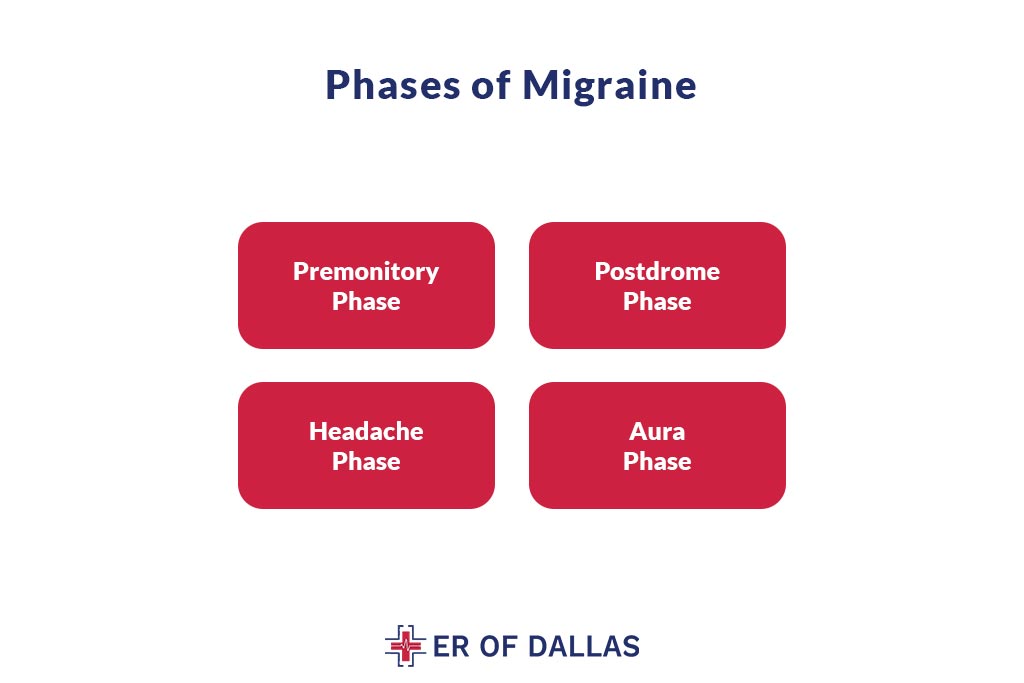
Premonitory Phase
The premonitory period is often referred to as the prodrome or preheadache phase by doctors. It includes symptoms that don’t hurt and appear days or hours before the headache.
- Symptoms of the premonitory period can include:
- Inexplicable mood swings
- Sensitivity to odors, light, or sound
- Cravings for food
- Stiffness in the neck
- Stress Migraine
- Diarrhea or constipation
- Regular yawning
Postdrome Phase
The headache passes throughout the postdrome period. People may feel worn out, perplexed, or generally ill during the postdrome period. This stage may continue for several days or only a few hours.
Headache Phase
Headaches from migraines can be minor or severe. Individuals experiencing a severe migraine headache can require urgent medical attention.
The pain is exacerbated by movement, as well as by exposure to light, sound, and scents. However, some people can experience migraine attacks without getting a headache.
Aura Phase
Sensory abnormalities that arise before or during a migraine attack are referred to as auras. Speech, touch, and vision can all be impacted by auras.
The following symptoms, in one or both eyes, may be brought on by visual auras:
- Blinking lights
- Zigzag lines
- Migraine hangover
- Blurred vision migraine, and gradually growing blind spots
Numbness or tingling that originates in the arm and spreads to the face is a result of sensory auras.
A person’s capacity for clear thinking and communication is impacted by motor auras. Among the motor auras are:
slurred or garbled speech trouble understanding what other people are saying
having trouble thinking having trouble writing words or sentences
Types of Migraines
Depending on the symptoms, there are numerous categories into which migraine fits. Here are a few instances of migraines:
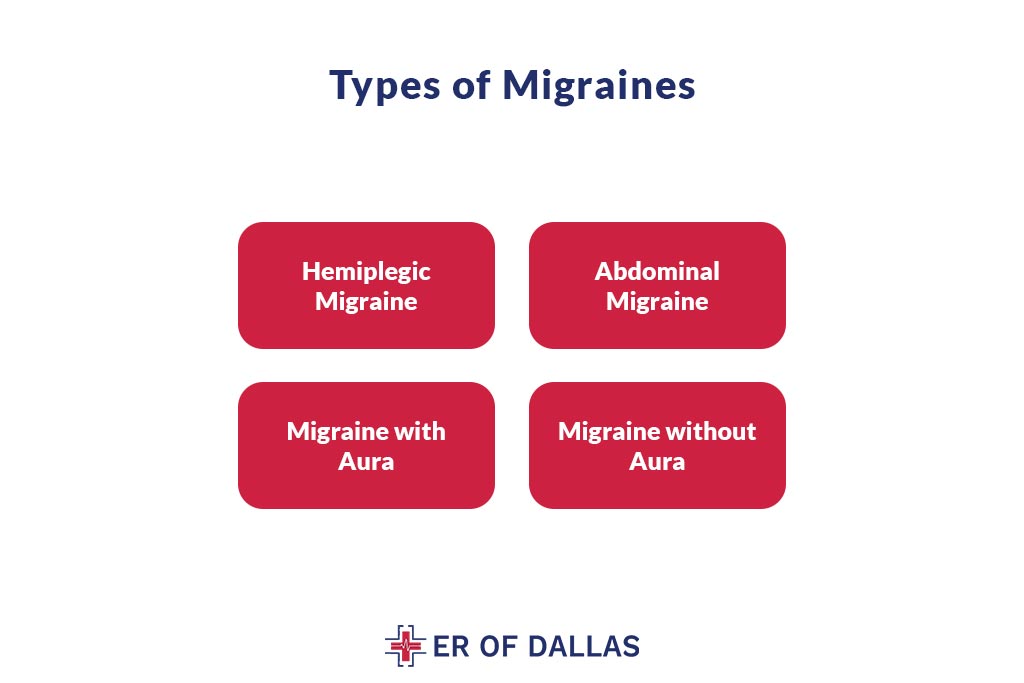
Hemiplegic Migraine
Before or during the headache, this unusual kind of migraine temporarily paralyzes the affected person. Additional signs of hemiplegic migraines consist of:
- Difficulty utilizing waking up with migraine on one side of the body
- Dizziness, or vertigo
- Trouble swallowing or speaking
- A feeling of something piercing or stabbing the head
- Issues with vision
Abdominal Migraine
The authors of a 2018 paper state that children between the ages of 3 and 10 are typically affected by stomach migraines.
Abdominal pain, nausea, and vomiting are the symptoms of abdominal migraines. This kind of migraine can cause either a moderate headache or none at all in its sufferers.
Migraine with Aura
A third of people with migraines report having an aura before the headache, according to the National Institute of Neurological Disorders and Stroke.
Even those who experience auras during migraine episodes may not always feel them. Auras may or may not be accompanied by headaches.
Migraine without Aura
On one side of the head, common migraines, also known as migraines without auras, induce excruciating, throbbing headaches.
The typical duration of these headaches is 4–72 hours. Aura-free migraines do not cause symptoms before the start of the migraine attack, although they can cause the previously mentioned premonitory signs.
Symptoms and Causes of Migraine
A headache is the main sign of a migraine. Sometimes, people describe pain as throbbing or pounding. It may start as a dull aching that progresses to mild, moderate, or severe pulsating pain. Your headache pain will progress from mild to severe if treatment is not received. Your head may hurt on one side and then the other, or it may impact the front, and back, or even feel as though your entire head is hurting. In addition to the face, sinuses, jaw, and neck, some persons have pain in the area surrounding their eyes or temples.
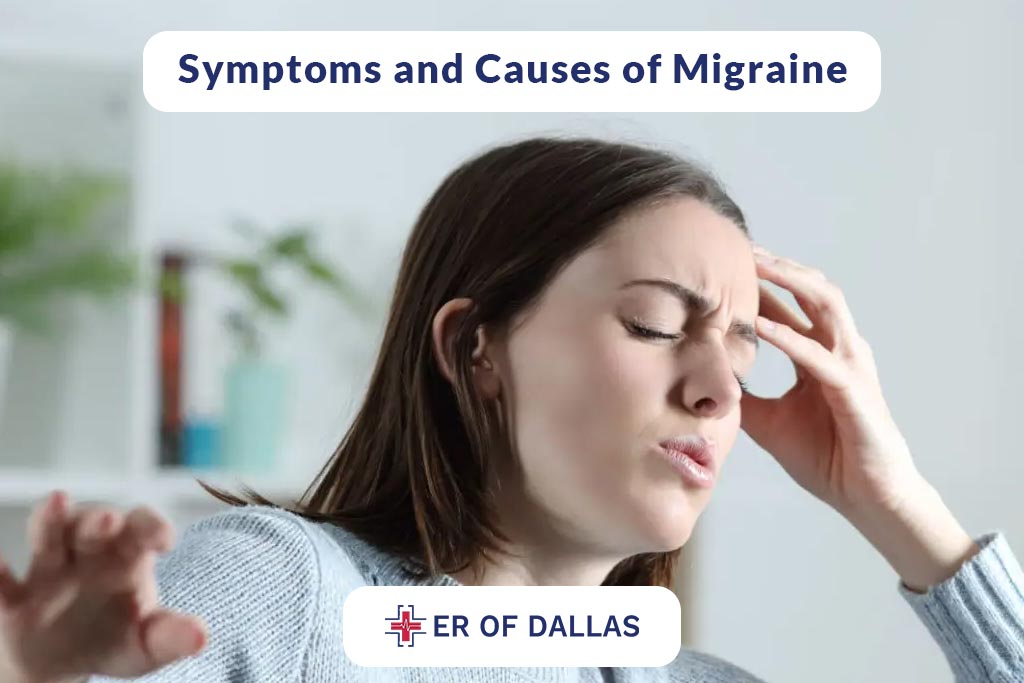
Additional indications of migraine headaches consist of:
- Lightheadedness and impaired vision.
- Sensitive to sounds, light, and smells.
- Abdominal pain, disturbed stomach, vomiting, and nausea.
- Paleness (the hue of skin).
- Appetite decline.
- Feeling extremely cold (chills) or warm (sweating)
What Causes Migraines? Are There Any Risk Factors?
Migraine headaches are a complex and poorly understood origin. Your brain receives pain signals from particular blood vessel nerves when you have a headache. This causes your head’s blood vessels and nerves to emit inflammatory chemicals. Your nerves do that for no apparent reason.
Migraine risk factors
Numerous factors linked to increased migraine risk have been identified by researchers and medical professionals. Among them are:
Being female having a history of migraines in the family mood problems, such as anxiety, depression, or bipolar disorder
Problems of sleep
Is Migraine a Hereditary Disease?
There is a familial tendency for migraine. Up to 45% of migraineurs have a family history of the condition. A child has a 50% probability of developing migraines if one parent has a history of them. The chance increases to 75% if migraines run in both parents’ families. Once more, up to 80% of migraine sufferers have a first-degree relative who also has the condition.
Diagnosis and Tests of Migraine
Migraines: How Are They Diagnosed?
To properly diagnose a migraine, your doctor will need to know everything about your medical history, including any family history of headaches in addition to your own. To gather a history of your migraine-related symptoms, they’ll also probably ask you to:
- Describe the signs and symptoms of your headache. To what extent are they severe?
- Recall when you received them. For instance, during your menstruation?
- Describe your pain’s nature and location. Is there a hammering pain? throbbing? Feeling a throb?
- Keep in mind if anything helps or aggravates your headache.
- Describe the frequency of your migraine attacks.
- Discuss any activities, diets, stressors, or circumstances that may have contributed to the migraine.
- Talk about the drugs you take for your pain and how frequently you take them.
- Describe your pre-, during-, and post-headache feelings.
- Recall whether any family members suffer from migraine headaches.
How Are Migraines Treated?
Chronic migraine headaches occur. Although they cannot be healed, they can be controlled and perhaps even improved. Medication is used in two primary therapeutic modalities: preventative and abortive.
If you get severe headaches that interfere significantly with your daily activities and occur more than four times a month, you may be prescribed preventive (prophylactic) medication. The frequency and intensity of headaches are decreased with preventive medicine. Most people take their medications daily to help prevent migraines.
The best results from abortion pills come from using them as soon as a migraine appears. While there isn’t much discomfort, take them. Abortive drugs assist in stopping or lessening your migraine symptoms, such as pain, nausea, light sensitivity, etc., by potentially terminating the headache process. Certain drugs that cause abortions restrict your blood vessels to return to normal, which stops the pounding discomfort.
Migraines are Triggered by What?
Numerous things can set off a migraine episode. Typical catalysts consist of:
- Sensitivity to particular food preservatives and chemicals.
Up to 30% of migraines may be caused by specific foods and drinks, including aged cheese, alcoholic beverages, chocolate, and food additives like nitrates (found in luncheon meats, hot dogs, and pepperoni), as well as fermented or pickled foods.
Headaches can result from sudden decreases in caffeine intake, whether from overindulgence or withdrawal. Caffeine seems to sensitize your blood vessels, and if you don’t receive enough of it, you might develop headaches. Healthcare professionals may occasionally advise using caffeine to treat acute migraine attacks, but this should not be done frequently.
- Brightness
You may become triggered by fluorescent lights, flashing lights, light from a TV or computer, and sunshine.
- Psychological strain
One of the most frequent causes of migraine headaches is emotional stress. The brain releases specific chemicals in response to stressful situations, a reaction known as the “flight or fight” response. A migraine may occur as a result of these substances being released. Other feelings such as concern, enthusiasm, and anxiety can widen blood vessels and tighten muscles. That may intensify your migraine.
- Women’s hormonal fluctuations
Women are more likely to experience migraines throughout their menstrual cycles. In addition to causing menstruation, the sudden decrease in estrogen can also cause migraines. Hormone replacement therapy and birth control medications can also cause hormonal alterations. Since adolescent girls and post-menopausal women typically do not experience these estrogen changes, migraines are typically worse between puberty and menopause. You might have a decrease in headaches following menopause if your hormones play a significant role in your migraines. Male migraineurs do not seem to be affected by hormonal fluctuations.
- Skipping a meal
You may also get a migraine headache if you miss a meal.
What Is the Best Migraine Medicine?
Because they obstruct the brain’s pain pathways, prescription medications including sumatriptan (Imitrex, Tosymra) and rizatriptan (Maxalt, Maxalt-MLT) are used to treat migraines. Numerous migraine symptoms can be alleviated by using them as pills, injections, or nasal sprays.
Can Migraine Cause Fever?
A person with sporadic hemiplegic migraines may have severe bouts that include fever and other acute symptoms. Similar to familial hemiplegic migraines, fever is a symptom of a migraine that occurs only in extremely severe cases.
The person moving usually exacerbates the pounding headache. Migraine-related symptoms may also include difficulty concentrating, feeling hot or chilly, sweating, and an increased urge to urinate. This may happen before, during, or following a migraine attack.
Bottom Line
The majority of people will at some point in their lives suffer from a headache. There is variation in headaches concerning their intensity, occurrence, and etiology.
A person’s general quality of life can be greatly diminished and their ability to perform is greatly impacted by headache conditions. This is the reason precise diagnosis is so crucial.
Accurately distinguishing between different forms of headaches and migraines can result in quicker and more efficient therapy.
See your healthcare physician if you experience migraines or chronic headaches. Your PCP can arrange at the ER of Dallas – Emergency Room for you to see a neurologist for additional evaluation and therapy if necessary.

